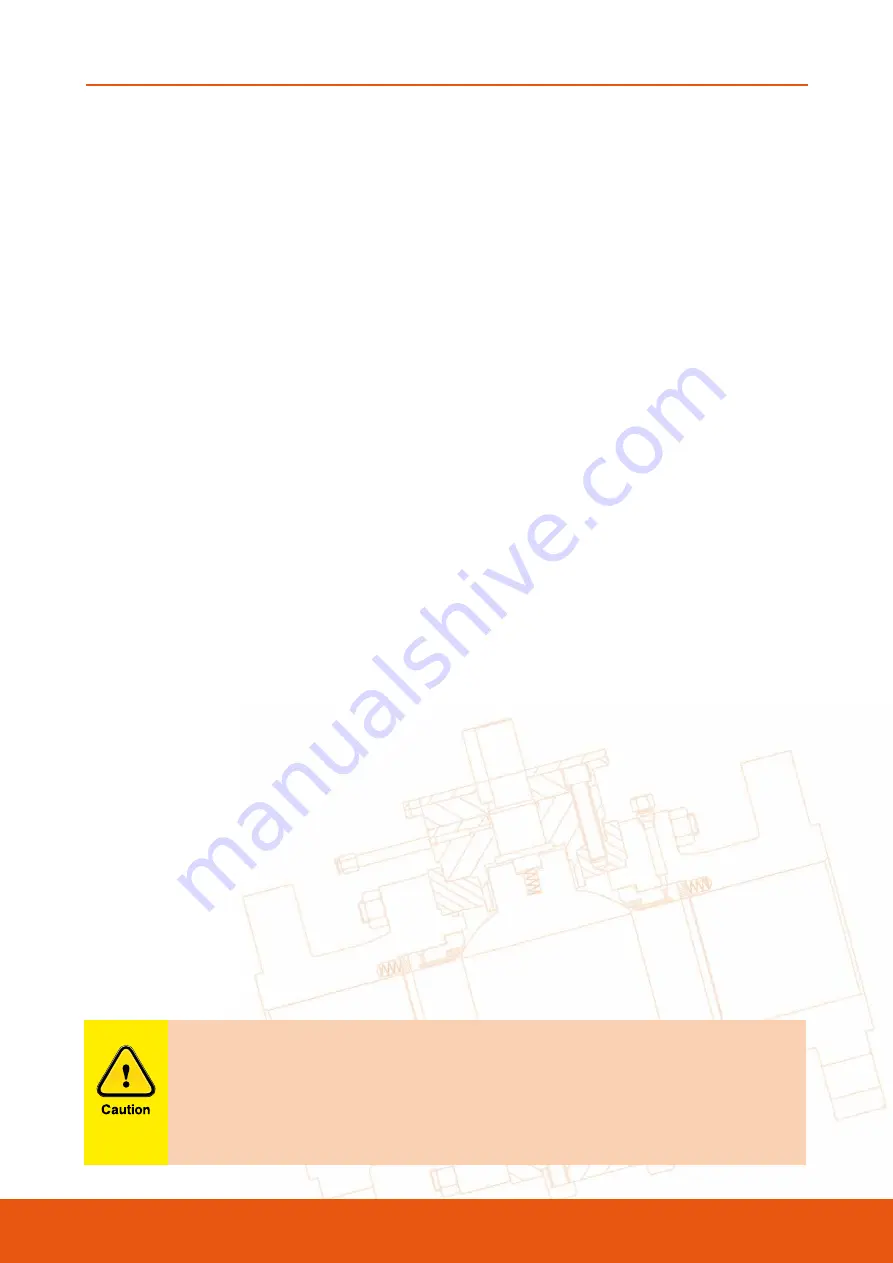
Stem seal body leakage can result in personal injury. BVF100 valves have a triple
barrier internal stem seal and cannot be ‘adjusted’ like a gland packed ball valve.
In an emergency, injecting grease into the grease sealant injection nipple fitted to
stem (where fitted) may temporarily cause the leakage to cease (refer 8.2) but the
valve should be removed from the line for repair as soon as possible.
• For the second month, every two weeks.
• For the third month, every month, for at least 6 months.
• Then every three months.
Depending on the type of seat inserts and type of particulates encountered in the media, after
commissioning it is best to only use the seat lubrication nipples for emergency use as it is possible that
grease on the seats will actually attract debris which can then damage the seats during closing or
opening. Nylon and Devlon are hard and resistant to scratching, PEEK is even harder. Teflon® (PTFE) is
softer and scratches easier, yet it can have more resilience and ‘memory’ in terms of resistance to
permanent indentations. However, all soft seated valves are only suitable for clean service. Also note,
PEEK seated valves have a higher operating torque. Teflon has the lowest operating torque, however it
has more ‘memory’ and if left closed for a long period of time the torque required to unseat it will
increase. Teflon is not suitable for larger sizes and higher pressures. Regardless of soft seat materials,
valves need to be regularly partially stroked to prevent sticking of seats and accumulation of entrapped
debris.
3 . 0 R E M O V A L F R O M L I N E
It is desirable that the maintenance operations are carried out by skilled personnel who are experienced
and well trained in standard field techniques and procedures. Be sure that the personnel involved in such
operations are aware of fundamental safety rules indispensable for the protection of their own and other
people’s safety. Ball valves are field maintainable, hence to carry out normal maintenance (stem
lubrication, stem packing substitution, seat lubrication) it is not necessary to remove it from line (seat
lubrication is only for emergency purposes not for maintenance).
If it is required to remove the valve from the line proceed as follows:
a- Ensure the line is fully depressurised.
b- Partially open the ball in order to depressurise the valve.
c- Remove the drain plug and vent plug. First release vent to ensure no remaining pressurised gas or fluid
trapped in cavity. Take safety precautions to avoid personal injury during this procedure. Then carefully
remove drain plug once you are sure valve has no remaining fluid or gas in cavity.
d- Keep the ball in the fully open position.
e- Remove the valve from the line. The valve shall be handled by means of lifting lugs fitting on the valve
(if applicable). Standard field techniques and procedures are satisfactory to disconnect it from the line.
f- After removal of the valve from the line, clean the valve and seal the ends with plastic or wooden
covers.
Australian Pipeline Valve - Installation, Operation and Maintenance Manual
11
SIDE ENTRY 3P TRUNNION BALL VALVES API6D STANDARD - BVF100 SERIES




























